Here are insights on the leading cybersecurity trends shaping the current landscape. The aim is to shed light on how these risks affect businesses and individuals while also providing practical measures you can implement to enhance your security.
The Impact of Lockdowns on Business Operations
The shift towards flexible work arrangements or full-time remote work has fundamentally altered the way businesses operate, expanding their vulnerability to cyber threats. Malicious actors are quick to seize opportunities presented by current events and changing environments, targeting those who are most at risk. You’ve likely encountered scams via email, phone calls, or text messages related to COVID-19—whether they involve fraudulent charities claiming to support frontline workers or scams posing as sellers of protective gear, hand sanitiser, or food supplies.
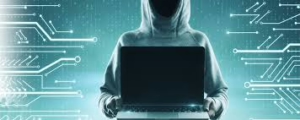
Since the onset of the global pandemic, cybercrime has surged by an astonishing 600%. As we continue to navigate uncertainties surrounding the virus and potential lockdowns, one thing remains clear: cybercrime is poised for further growth. The changes brought about by lockdowns have irrevocably transformed every aspect of how we conduct business today.
The clear advantages of cutting down on capital expenditures are evident, especially with a remarkable 47% year-over-year increase in productivity, even with the prevalence of remote work. States like Florida and Texas are increasingly drawing major corporations and talent away from traditional hubs like New York and California. The adaptability of remote work is allowing businesses to implement significant changes in their operations. A prominent advocate for this shift is Salesforce, the software powerhouse that recently declared its intention to scale back its office space requirements permanently.
Companies that thrive without a physical office will likely not revert to a conventional workspace. Consequently, security considerations must be integral when crafting remote work policies. Although measures exist to protect employees working from home, they could be more foolproof; it only takes one misstep to jeopardise an entire network. Ongoing vigilance from users, coupled with investments from key players in the industry, will be essential for creating a genuinely secure environment for business operations.

The era of merely ticking boxes for compliance or relying on average industry risk assessments as sufficient is over. Cybercriminals look for this complacent mindset when choosing their next target. For those interested in safeguarding against such threats, resources on how to prevent cyber attacks and insights into recent cybersecurity incidents can provide valuable guidance on best practices and trends within this critical field.
Patch management is poised to become a critical focus for executive leadership. Cybercriminals frequently target systems by taking advantage of unaddressed vulnerabilities. A Ponemon Institute survey revealed that in 2019, 60% of data breaches stemmed from such unpatched weaknesses. Consequently, discussions surrounding patch management services have gained significant traction among C-suite executives. Essentially, patch management involves an ongoing cycle of discovering, prioritising, addressing, and reporting security flaws within systems. This process is especially vital for organisations aiming to eliminate a backlog of vulnerable systems.
The primary objective of an effective patch management program is to ensure that robust patching policies are uniformly applied throughout the organisation. Many businesses are now looking towards managed security service providers as a cost-efficient solution for better managing their vulnerable systems and mitigating risks. Numerous vendors offer these services without necessitating the installation of costly third-party tools, thus conserving internal resources.
Moreover, it’s essential to partner with a vendor who can help establish consistency in your patch management approach. This collaboration guarantees that processes remain predictable and repeatable, ultimately reducing the time needed to sustain the program.
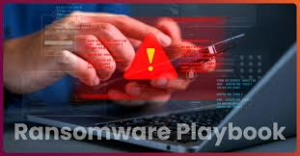
For those interested in further enhancing their cybersecurity posture, consider exploring topics like conducting successful network security vulnerability assessments or understanding the frequency required for network vulnerability scans. It’s also beneficial to differentiate between internal and external vulnerability scans and familiarise yourself with essential network security policy templates.
In traditional Intrusion Detection Systems (IDS), traffic data is aggregated and scrutinised for any signs of suspicious behaviour—a method known as signature-based monitoring, which identifies attacks through established signatures and patterns. Alternatively, there’s heuristic detection or anomaly-based monitoring, which focuses on identifying unusual behaviours indicative of potential threats.
Ransomware remains the foremost threat in cybersecurity. This malicious software effectively locks users and system administrators out of their files or entire networks. After a system is compromised, cybercriminals typically deliver a ransom note, demanding payment, often in Bitcoin. For further insights, explore how ransomware spreads in 2024 through five prevalent methods.
The year 2020 marked a grim milestone when ransomware was linked to the first reported death from a cyber attack. In this tragic incident, a hospital in Germany found itself unable to access its systems and provide necessary medical care. A woman requiring urgent assistance was redirected to another facility located 20 miles away, but, unfortunately, she did not survive the journey.

Regrettably, current trends within the industry do not inspire confidence. A survey of 582 information security professionals revealed that half of them doubt their organisation’s readiness to fend off a ransomware assault. Compounding this issue, 75% of companies that fell victim to ransomware were utilising up-to-date endpoint protection.
This form of attack proves highly profitable for cybercriminals due to the availability of advanced ransomware kits on the dark web. Healthcare providers are particularly susceptible and have been significantly impacted for two main reasons: Personal Health Information (PHI) can fetch hundreds of dollars per record on illicit markets and is frequently resold among various threat actors. Additionally, healthcare security measures tend to focus more on compliance rather than robust security practices.
For instance, vulnerability scans often categorise risks as Critical, High, Medium, or Low. While organisations prioritise addressing Critical and High vulnerabilities, they may neglect Medium or Low ones that could expose them to threats. Ignoring these vulnerabilities—whether they exist in printers, medical devices, or other connected equipment—creates openings for cybercriminals to infiltrate networks.
Looking ahead, there are no indications that ransomware will diminish anytime soon. We anticipate new targeted variants emerging with an aim to compromise specific sectors such as education, mining, and transportation.
The recent breach of SolarWinds’ Orion platform has highlighted an urgent need for businesses to prioritise cybersecurity. This incident, a highly sophisticated supply chain attack, affected more than 18,000 clients, including numerous Fortune 500 companies and various government entities. In this article, we will delve deeper into the implications of such attacks; however, it’s essential to note that cybercriminals often target organisations that can be easily infiltrated and hold considerable financial value. By compromising a vendor, attackers can circumvent the advanced security measures employed by larger organisations.
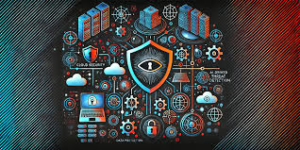
A report from VMWare indicates that half of today’s cyberattacks target not only networks but also those linked through supply chains. Moreover, there was a staggering 78% increase in supply chain attacks in 2018 alone. A study by Sonatype in 2020 revealed an astonishing 430% rise in attacks on open-source software within the supply chain context. The troubling reality is that no matter how fortified your cybersecurity framework may be, if your supplier is breached, your organisation remains at risk.
Once attackers establish access to your network, they typically seek to navigate laterally across systems to elevate their privileges and seize control over critical infrastructure or data. In some cases, they may remain undetected for extended periods—months or even years—while silently gathering and exfiltrating sensitive information.
Looking ahead, it’s clear that supply chain attacks will continue to represent a formidable threat to organisations worldwide. One effective strategy for mitigating these risks is the adoption of Zero Trust Architecture—a model designed to enhance security by ensuring that trust is never assumed and verification is always required before granting access.
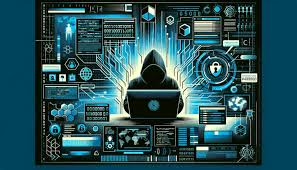
The Cybersecurity Maturity Model Certification (CMMC) is poised to play a pivotal role in establishing and enforcing security standards. This compliance framework, which has been in development for quite some time, is rooted in the Defense Federal Acquisition Regulation Supplement (DFARS) and the NIST 800-171 guidelines. It mandates that Department of Defense (DoD) suppliers adhere to various security controls based on the sensitivity of the data they access or store. The potential loss of government contracts serves as a powerful incentive for these suppliers to comply.
Recently, new requirements have emerged, compelling organisations to demonstrate their commitment to working towards CMMC compliance. This shift stems from concerns that some businesses needed to be more truthful about their implementation of essential security practices. From a business standpoint, it’s understandable; many industries operate on razor-thin margins and may find it challenging to invest in such initiatives.
To alleviate some financial burden states like Maryland are offering reimbursements—up to $2,500—for conducting a NIST 800-171 Gap Analysis. However, this amount falls significantly short of covering the total expenses involved in conducting the analysis and implementing necessary security measures. While it’s regrettable that companies must be compelled to meet these certification requirements, such actions ultimately foster a more secure operational landscape.
CMMC is merely an initial step towards establishing a more cohesive set of security standards across the United States.
The landscape of Security Operations Center (SOC) services is on the rise, driven by the necessity for real-time monitoring, detection, and response to cyber threats. These centres play a crucial role in helping organisations adopt a comprehensive security strategy by centralising asset visibility, fostering interdepartmental collaboration, and ultimately enhancing overall awareness to reduce costs. Today’s SOCs are more accessible than ever before, mainly due to the explosive growth of cloud technology. Additionally, there is a growing trend of integrating security measures into smaller business models. Many small and mid-sized enterprises are opting for SOC as a service because it offers a cost-effective solution with predictable monthly fees compared to the expenses associated with maintaining an internal security team. On the other hand, larger enterprises often find it more beneficial to establish their in-house SOCs.

The market for SOC as a service is expected to expand significantly, projected to reach $1.6 billion by 2025 from $471 million in 2020. The shift towards remote work and Bring Your Device (BYOD) policies has further accelerated this trend since 2020 and is likely to continue growing year after year. Moreover, compliance requirements such as CMMC necessitate the deployment of Security Information and Event Management (SIEM) systems along with Intrusion Detection Systems (IDS) and Intrusion Prevention Systems (IPS). However, it’s important to note that many small and mid-sized organisations need access to the necessary talent, tools, and program management expertise required for operating an effective SOC on their own.
The authentication landscape is set to change significantly, particularly with the growing recognition of multi-factor authentication (MFA) as a leading security measure. Despite its reputation as the gold standard, recent reports in The Breach Report have highlighted numerous instances where cybercriminals have successfully circumvented traditional authentication methods, especially those reliant on SMS and phone calls. A notable example occurred in early November when Microsoft advised its users to abandon phone-based MFA in favour of app-based authenticators and security keys.
While SMS offers a degree of security, it lacks encryption, leaving the door open for attackers to execute automated man-in-the-middle attacks that can intercept one-time passcodes in an unprotected format. This vulnerability is particularly concerning for online banking—an industry that heavily relies on SMS for authentication. A recent investigation unveiled a large-scale banking fraud scheme that affected 16,000 devices and resulted in over $10 million in losses.

In light of these alarming statistics and risks, organisations are increasingly expected to shift towards application-based MFA solutions like Google Authenticator. Additionally, implementing hardware MFA options such as YubiKey will become more prevalent as businesses seek to enhance their security measures against evolving threats.
The era of cybersecurity conflict is upon us, and the tensions are escalating. The extensive data breach affecting both the federal government and private enterprises, which first emerged around March 2020, marks just the beginning of a more significant issue. Although the cyber Cold War was already underway, this incident paved the way for even more significant challenges ahead. The repercussions of this breach are far-reaching, yet at this moment, we can only speculate on their full extent. In reality, it will take years to fully understand the ramifications of this attack—who orchestrated it, which systems were infiltrated, and what sensitive information was stolen.
What is clear is that U.S. government entities were specifically targeted alongside numerous Fortune 500 companies reliant on the SolarWinds monitoring platform. It seems inevitable that substantial investments will be directed toward upgrading outdated government IT infrastructures and that some form of retaliation will occur in response to these breaches. Meanwhile, nations like China are actively retraining their military forces in cybersecurity tactics with ambitions to dominate this field by 2027.
In the United States, top officials from the Department of Homeland Security have identified a critical shortage of trained cybersecurity professionals as a pressing national security concern. Recently, British Prime Minister Boris Johnson participated in a virtual conference emphasising the urgent need to enhance his country’s capabilities against cyber threats. Essential components of our infrastructure—such as power grids and telecommunications—remain highly vulnerable to potential attacks. With just a single click from thousands of miles away, an entire nation could be plunged back into primitive conditions.

As cyber warfare intensifies, it becomes increasingly evident that investing in training cybersecurity experts is more crucial than developing nuclear arsenals.
Threat actors carefully assess their targets, balancing the effort required against the potential rewards. While a bank may seem like an attractive target due to its wealth, the resources needed to infiltrate such a secure institution often exceed what most hackers can muster. On the other hand, going after a small business that struggles to pay a ransom of $1,000 needs more appeal in terms of profitability. Instead, these malicious individuals focus on industries that are less regulated and offer substantial financial returns. In light of the current economic climate and the sectors likely to thrive amid an impending recession, four primary industries emerge as prime targets: mining, transportation, construction, and energy.
Starting with mining, this sector is frequently misinterpreted by many investors. The prices of various metals—such as gold, silver, copper, nickel, uranium, and lithium—and other industrial or precious materials are on an upward trajectory and are expected to continue rising. This increase can be attributed to highly constrained supply chains resulting from heightened year-over-year demand and insufficient investment in exploring new reserves. Additionally, operating mines are notoriously costly and often requires years before they reach total production capacity. At the same time, commodity prices have plummeted to unprecedented lows—a phenomenon captured by the saying: The cure for low prices is low prices.
The dollar is currently on track to experience its worst fourth-quarter performance in nearly two decades, with a staggering 35% of all US dollars in circulation having been created within just the last ten months. These circumstances create an ideal environment for commodity prices to climb.
When we look at the transportation sector, it’s clear that it has long been vulnerable to cyber threats. The pandemic has transformed operational dynamics, and the demand for delivery services continues to surge without any signs of abating. Major online retailers like Amazon, Walmart, Costco, and Chewy have seen their stock values skyrocket since Marc. Online shopping has become increasingly popular—now accounting for nearly $1 out of every $5 spent. Disruptions in supply chains extend beyond mere inconveniences like delayed Amazon deliveries; for many individuals, these services represent their only access to fresh produce or essential medications.

Turning our attention to construction, projects across the United States are expected to see a boost under the new administration. The administration is focused on rejuvenating our crumbling infrastructure while also creating better-paying jobs that offer more benefits than typical lower-wage service positions. The federal government plans a substantial investment of around $2 trillion, which will necessitate compliance from construction firms with CMMC standards.
In terms of energy, there is anticipation for a recovery as global economies begin to reopen. Oil and natural gas companies are already consolidating within the market; notable discussions between Exxon and Chevron about a potential merger could lead to one of the largest corporate unions in history. As demand begins its upward trajectory again, those companies that navigate through this challenging period will likely reap significant rewards. Although green energy initiatives pose a potential threat to traditional energy sources, any significant shift away from oil, natural gas or nuclear power is still years away at best. In fact, as green movements gain traction, they may drive up overall energy consumption even further.
The trend of remote work is firmly established, leading to residential neighbourhoods becoming prime targets for cybercriminals. According to Microsoft, there was a significant 35% increase in Internet of Things (IoT) attacks during the first half of 2020 compared to the latter half of 2019. From the perspective of execution, these attacks are relatively straightforward for attackers to carry out. While they do need to be within about 65 feet of their target, the necessary equipment can be acquired for under $200, and configuring such devices can quickly be learned through online tutorials within a few hours.
One standard method employed by these attackers is a de-authentication attack on unsecured Wi-Fi networks. This technique allows them to obtain a hashed version of your network password, which they can then crack offline using brute force methods. Once they successfully decipher your password, they gain access to your network and can take control of any connected devices.

We anticipate that such attacks will become increasingly frequent, particularly in densely populated areas like apartment complexes where multiple users are vulnerable at once.
Looking ahead, it’s clear that businesses will need to prioritise investments in cybersecurity more than ever before. Security measures are likely to become an inherent part of operational costs as we move forward. The Cybersecurity Maturity Model Certification (CMMC) is set to establish a standardised security framework in the United States that organisations must adhere to.
Despite the alarming news surrounding data breaches and cyber threats, there’s no need for despair. By taking proactive measures now, individuals and businesses alike can significantly reduce their risk and enhance their defences against potential cyber-attacks.
Maxthon
Smartphones have woven themselves into the fabric of our everyday existence, making the need for their protection more crucial than ever. To kick off the journey of securing your device, your first task is to track down the Maxthon Security app. Imagine yourself gliding through your device’s app store, fingers dancing across the screen as you search for Maxthon Security. With a simple tap on the download button, you set in motion a series of events aimed at bolstering your phone’s defences.
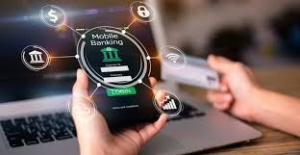
As the installation process wraps up, a sense of anticipation bubbles within you. Eagerly, you open the app, prepared to enhance your smartphone’s security features. Upon launching it, you’re greeted by a prompt that asks you to create a strong password or PIN. This isn’t just any ordinary password; it needs to be a robust combination of letters, numbers, and symbols designed to withstand potential threats. After selecting and confirming a secure option that meets all necessary criteria, you’re ready to explore further protective measures for your device.
If your smartphone is equipped with biometric technology such as fingerprint scanning or facial recognition capabilities, now is an excellent moment to take advantage of this advanced feature. Head over to Maxthon Security’s settings and activate these options; they will provide an additional layer of defence against unauthorised access.
With these critical steps completed, it’s time to turn on real-time protection—a feature specifically designed for continuous vigilance against emerging threats. Nestled within Maxthon Security’s settings lies this powerful tool; activating it ensures that your phone will remain on constant watch for any signs of danger lurking in cyberspace. Should anything be by your side?

However, don’t let yourself become complacent! Regular updates are essential for keeping Maxthon Security functioning at its best against evolving cyber risks. In fact, consider enabling suspicious occurrences, and you’ll receive instant notifications—like having ever-watchful guardian automatic updates in your device settings—so that maintaining top-tier security becomes effortless in this digital age.
